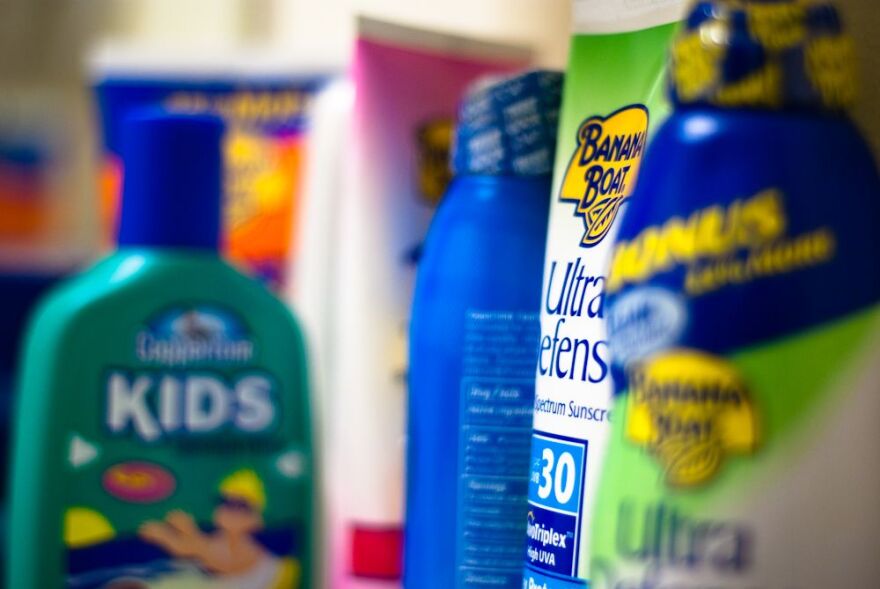With warm weather finally here again, experts say it’s important to find the best way to protect your skin from the sun’s harmful rays.
This week on “Take Care,” Dr. Emmy Graber discusses what kind of sunscreen to buy and the benefits of using it. Graber is an assistant professor of dermatology at the Boston University School of Medicine and Boston Medical Center.
The sun emits ultraviolet light, which can damage skin in many different ways.
There are two types of ultraviolet light – ultraviolet A and B. UVA are the sun’s long wave rays and UVB are the shortwave rays, but both are equally harmful to the skin.
“Both UVA and UVB can cause skin cancer,” Graber says. “UVB is more likely to be responsible for the burn that we see on our skin whereas UVA can be more responsible for skin aging, creating wrinkles and some of the brown spots that can be on the skin after years of being in the sun.”
The best way to know if you’re using a good sunscreen is by checking for two things on the bottle. The SPF number on the bottle refers to the protection against UVB. A good sunscreen will aso be "broad spectrum," which protects against UVA and UVB rays.
The higher the SPF number, the higher the protection against UVB rays. Graber says, however, there are minor differences in protection once you start using sunscreen with an SPF higher than 15.
“There’s a big difference between something that might be an SPF 4 and an SPF 15,” Graber says. “But there’s not so much of a difference between something that’s SPF 15 and SPF 50.”
The sunscreen ingredients that provide the best protection against the sun are zinc oxide and titanium dioxide. The problem with these ingredients, Graber says, is they leave behind a white residue on the skin.
“The most important thing to know if you’re protecting against all of those things – would be to make sure it says on the label that it’s a broad spectrum sunscreen,” Graber says. “For the SPF protection level, you want to pick something that’s 15 or higher.”
When sunscreen bottles have a label that says SPF 70 or 80, it’s more of a marketing ploy than a scientific certainty, Graber says. And, the Food and Drug Administration may soon change the way some of those numbers are advertised.
“It might be, in the future, that the highest that you’ll see is something that says 50 plus,” Graber says. “They may change it so that the manufacturers aren’t actually allowed to even put a 70 or an 80 on the label.”
When it comes to sunscreen, application is important. Graber says a shot glass (about two tablespoons) worth of sunscreen over the entire body is how much an average-sized adult needs. You should reapply sunscreen every two hours.
“That’s quite a bit more than what most people are applying.”




